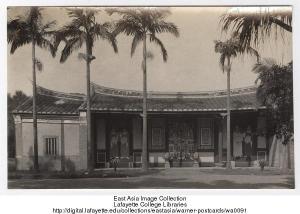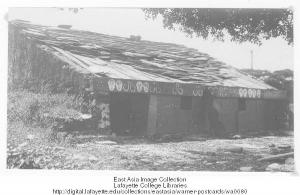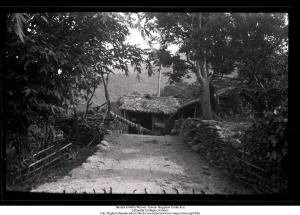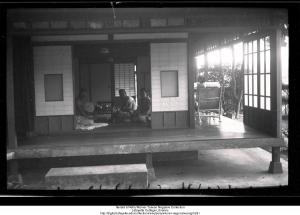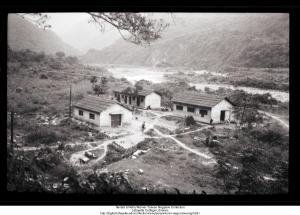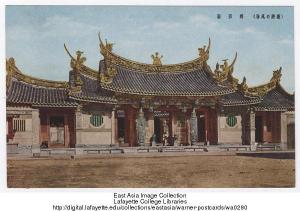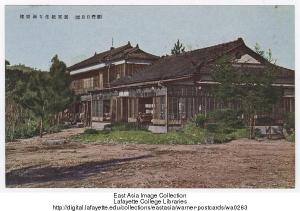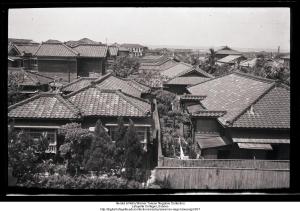(臺灣八景)鵝鑾鼻燈塔和神社
詳細資料
[英文]Oluanpi lighthouse and shrine
[英文]One of the officially proclaimed @Eight Sights of Taiwan@ during Japanese colonial rule, Ouluanbi Oluanpi 鸥銮鼻 @is located at the southern-most tip of the island of Taiwan, in the Ouluanbi district of Hengchun Rural Township, Pingdong County....Ouluanbi is also called South Jia 南岬, or Shamaqi 沙马崎, or in Western Languages, South Cape. Ouluanbi$s name comes from the Paiwan ... which in Chinese was transliterated as Ouluan. It meant sail. To emphasize the prominence of the jutting peninsula, the word bi was added, meaning @nose@....After 1875, Chinese people began coming here...@ (Liu 1996, p. 129). The lighthouse itself was built in 1882, it is 70 ft. tall. Rare for a lighthouse, Ouluanbi is also a fortress, built to arrest @incursions@ from local Aborigines (Macdonald 2007, p. 180). As a symbol of governmental authority and icon of propaganda, Yao Tsun Hsiung has written that the @Oluanpi lighthouse emphasized Taiwan$s geographical status as a seagirt island. In addition, the lighthouse$s location at the southernmost tip of Taiwan, which was also the southernmost limit of Japanese rule throughout most of the colonial period, made it a symbolic watchtower and guard post looking out toward Southeast Asia and the South Pacific. The lighthouse was thus also imbued with deep political significance in the eyes of the Japanese. The bills issued by the Bank of Taiwan, which were used to publicize government edicts and featured Taiwan$s distinctive coconut trees on their backs, were decorated with the Oluanpi lighthouse@ (Yao 2006, p. 65).
POST CARD
1/2 divided back 郵便はかき
9公分 x 14公分

